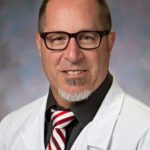Adult Congenital Heart Disease: Let’s Finish What We Started
Adult Congenital Heart Disease: Let’s Finish What We Started https://pediatricsnationwide.org/wp-content/themes/corpus/images/empty/thumbnail.jpg 150 150 Curt Daniels, MD Curt Daniels, MD https://pediatricsnationwide.org/wp-content/uploads/2021/03/Curt-Daniels.jpg- November 06, 2014
- Curt Daniels, MD
Congenital heart disease is the most common birth defect, diagnosed in nearly 1 percent of all births in the United States. Traditionally, life expectancy in many infants with severe CHD was limited to months. However, advances in medical and surgical care have led to remarkable improvements in survival: the median age of those living with severe disease has increased from 11 years in 1985 to 17 years in 2000.
Indeed, there are now more than 1 million people over the age of 18 living with adult congenital heart disease (ACHD) in the United States, which means that two-thirds of the entire CHD population in this country are adults.
As we celebrate these tremendous accomplishments, we must also recognize, however reluctantly, that this success can be short-lived for many patients. Increased morbidity and early mortality appear significant from available data registries. Arrhythmias and heart failure are common. Many patients require cardiac re-operation and carry a risk for silent — and often fatal — vascular complications. Hospitalization rates are two to three times higher for certain age groups, and the mean age of death from sudden cardiac arrest among patients with moderate and severe CHD diagnoses is younger than 40 years.
Therefore, it is time to finish what we started. The attention, organization, collaboration, training, program building and research funding for ACHD must match the magnitude of the population and the overwhelming need to improve outcomes. We can get there within our own institutions by improving the care of our adult patients through better coordination between pediatric and adult hospitals. But to achieve true success in improving outcomes for all ACHD patients, we must change or create sustainable models in the field.
First, we must look at who cares for the ACHD patient. Traditional cardiology training consists of three years of either pediatric or internal medicine training followed by another three years of pediatric or internal medicine cardiology. While that instruction offers knowledge in the required curriculum, rotations, procedures and documented competencies, there is no training in the actual care of the ACHD patient — and all that this care involves. The lack of specialized programs means that most cardiologists trained via traditional pathways are not adequately skilled or experienced in managing this complex population. The intricacies of anatomy, physiology, surgery and post-repair changes in these patients warrant a separate knowledge base and hands-on experience in caring for the specific needs of ACHD patients.
To address this problem, a petition to develop ACHD board certification was initiated in 2007 with support from both the American Board of Pediatrics and the American Board of Internal Medicine. In 2012, the petition was approved and in 2015, the first set of training guidelines will be offered and the first board exam in ACHD will be administered.
Second, we must look at how we care for ACHD patients. Currently, these patients are treated in either a pediatric or adult hospital, or, in some cases, both. The staff and personnel availability may vary from city to city and those performing high-risk procedures may or may not have experience in treating ACHD patients. The care models across the United States are inconsistent. Recent data suggests that the lack of a dedicated team or program for ACHD patients may affect overall outcome and survival.
For this to change, these programs must be held to a higher standard, with a minimum set of criteria based upon improving the quality of care delivered. Physicians and nurses must be trained in the field of ACHD and be dedicated to this patient population. Those performingprocedures, both catheter-based and surgical, must be either certified or have specific skills and knowledge in ACHD, and the environment must be appropriate for adult patients, including the availability of technical staff and equipment.
Last, to realize improved outcomes we must develop and complete robust, meaningful research to guide therapies. This patient population is complex, often presenting with variations in anatomy and physiology within the same diagnosis. This requires large data sets to accurately study the disease and provide results that will shape future practice. Toward that end, a multi-center research consortium, the Alliance for Adult Research in Congenital Cardiology, was created to develop and implement large multi-center trials for ACHD. Several important studies have already emerged from this group, with many more in progress.
This is all a part of recognizing that CHD patients require specialized treatment by cardiologists trained to care for them — from infancy through adulthood — and that providing this care requires models focused on the ACHD patient, supported through rigorous research into the mechanisms of disease. This is how we’ll finish what we started.
About the author
Curt J. Daniels, MD, is Director of the Adolescent and Adult Congenital Heart Disease Program at The Heart Center at Nationwide Children's Hospital. He is a Professor of Clinical Cardiology at The Ohio State University College of Medicine. Dr. Daniels received his medical degree from The Ohio State University. He completed his residency and received fellowship training from Children's Hospital in Columbus. He is certified in Pediatrics, Internal Medicine and Cardiology, and is therefore uniquely qualified to diagnose, treat and provide long-term care for the growing number of adolescents and adults who are diagnosed with congenital heart disease.
-
This author does not have any more posts.
- Post Tags:
- Cardiology
- The Heart Center
- Posted In:
- Features
- Second Opinions




